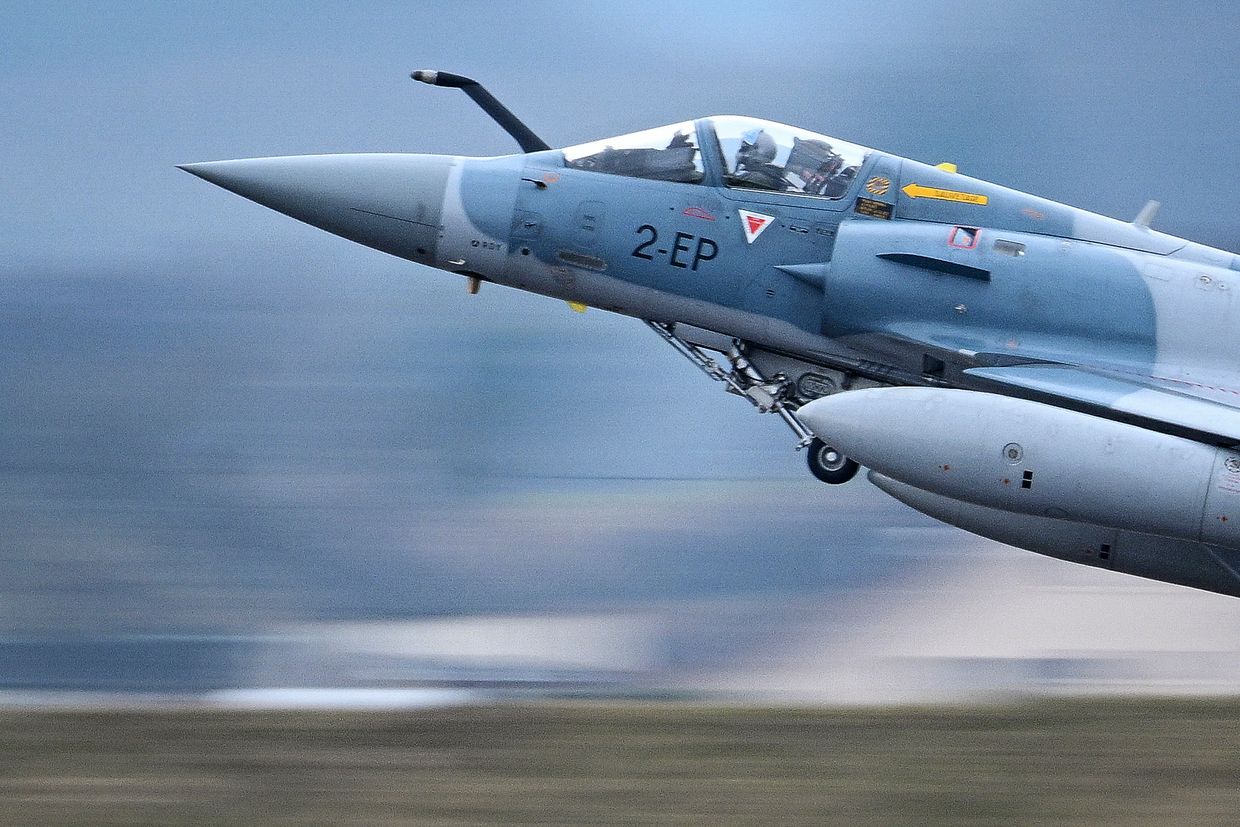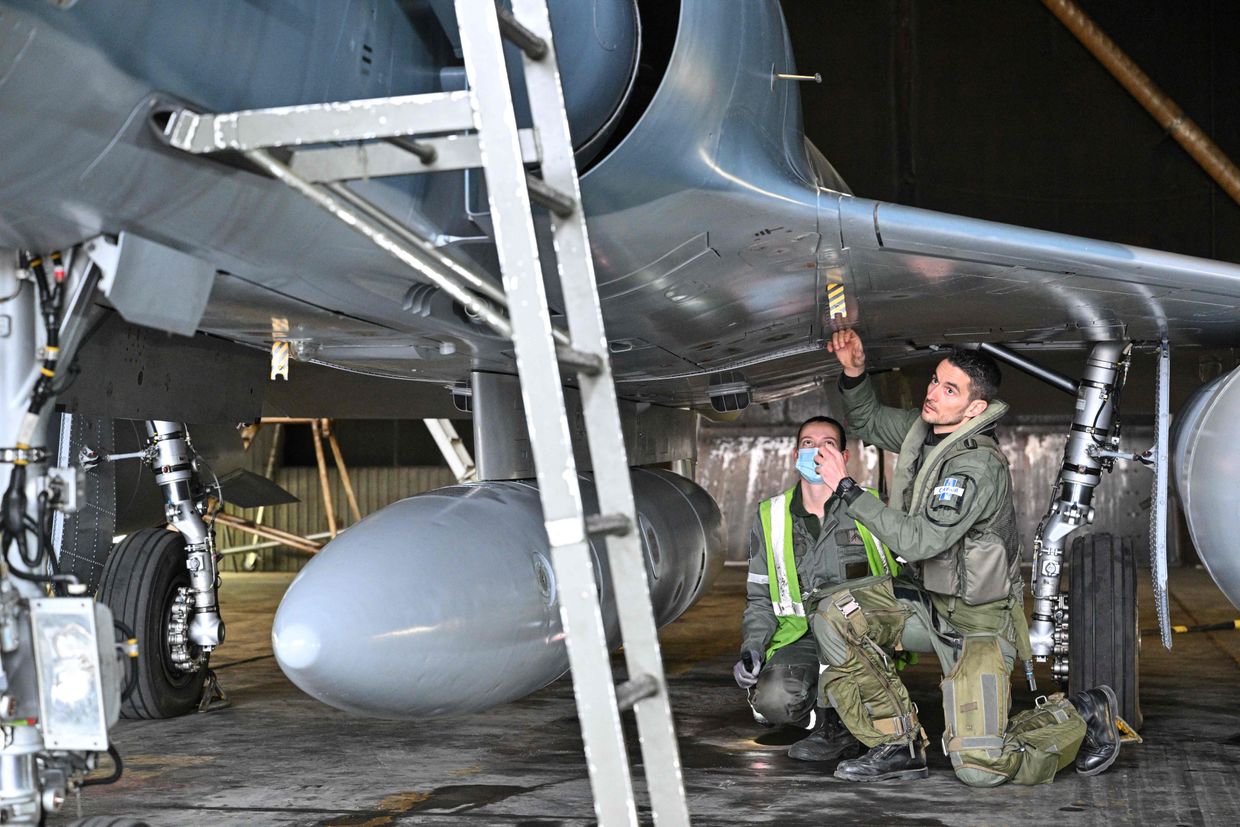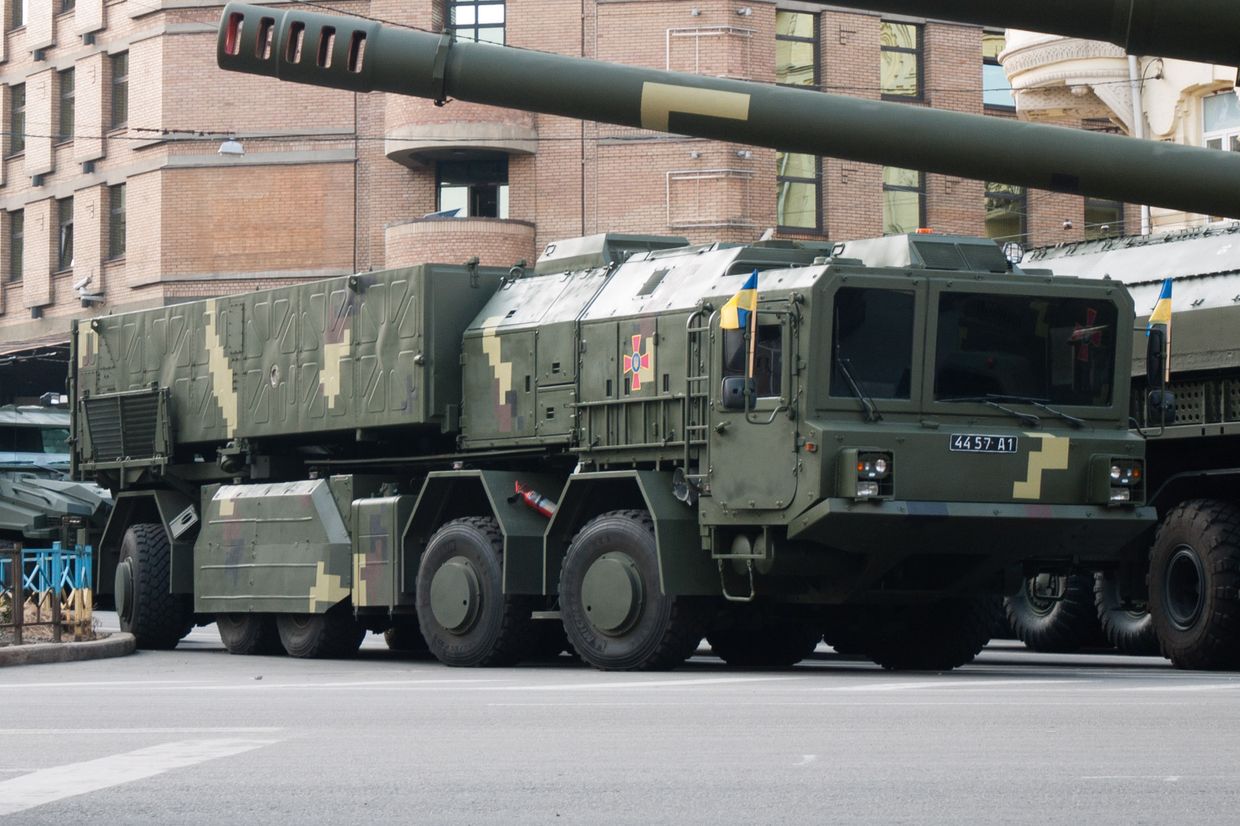During the D-Day commemorations in Normandy on June 6, French President Emmanuel Macron declared that Paris would give Kyiv an unspecified number of Mirage 2000-5 fighter jets alongside the required training.
This announcement sets the stage for Ukrainian pilots to potentially deploy these versatile aircraft in striking deep into Russian territory with Storm Shadow and SCALP missiles or defending Ukrainian airspace from Russian drones and missiles.
"Tomorrow we will launch a new cooperation and announce the transfer of Mirage 2000-5 fighter jets to Ukraine made by French manufacturer Dassault and train their Ukrainian pilots in France," Macron revealed during a live interview.
However, Ukraine may have to exercise patience before these planes take flight. Macron noted, “You need normally between five to six months (for training). So by the end of the year, there will be pilots. The pilots will be trained in France,” refraining from specifying any concrete deadline for the planes’ delivery.
Nonetheless, this commitment signifies an expansion of Ukraine’s air fleet with another Western aircraft system, complementing the U.S.-made F-16s already pledged by the Netherlands, Belgium, Norway, and Denmark.

What is the Mirage 2000-5?
The Mirage 2000, a fourth-generation multirole supersonic jet, was introduced by the French manufacturer Dassault in the 1970s. With over 600 aircraft produced across all variants, it serves nine countries, available in single- and twin-seat variants.
The Mirage 2000-5, introduced in 1999, represents an upgraded version featuring advanced avionics, enhanced firing capabilities for both air-to-air and air-to-ground missions, and a modern sensor and control system.
“The (Mirage 2000)-5 variant has a high-quality radar, (is) fitted with drop tanks, has a reasonable range, and carries a range of air-to-air and air-to-ground weapons,” Peter Layton, a visiting fellow at the Griffith Asia Institute and an associate fellow at the Royal United Services Institute (RUSI), told the Kyiv Independent.
A significant enhancement of the Mirage 2000-5 is the inclusion of the Thomson-CSF Radar Doppler Multi-target (RDY), augmenting its capabilities for deep-strike and close-support missions.
Equipped with a variety of air-to-air missiles and weapons, such as Mica missiles with a range of up to 60 kilometers or older Magic short-range missiles, the Mirage 2000-5 can be configured to meet diverse mission requirements. Its capacity for carrying drop tanks further extends its operational range.
In terms of air-to-ground operations, the Mirage 2000 can deploy various weaponry, including SCALP missiles, previously supplied to Ukraine by France, and guided bombs.
While the French Air Force has around 40 Mirage 2000-5s, only 26 one-seaters are in active service. The French military is reportedly planning to phase them out by the end of the decade, replacing them with the more advanced Dassault Rafale and thereby potentially freeing up the older Mirage 2000 aircraft for transfer to Ukraine.
How can Ukraine use them?
Mirage jets are versatile and can be used for ground strikes, intercepting missiles, and countering drones.
Viktor Kevliuk, a retired Ukrainian military officer and defense expert, told the Kyiv Independent that Ukraine could use the aircraft to target Russian positions with Storm Shadow or SCALP missiles. According to Layton, the Ukrainian Air Force has a dwindling supply of Su-24 aircraft previously used for SCALP launches.
Mirage 2000-5s can deploy anti-ship Exocet missiles and AS 37 anti-radar projectiles, Kevliuk added. The jets can also conduct strikes using long-range bombs, such as the AASM Hammer, and incorporate advanced precision-guided munitions like JDAM-ER and SDB, which offer increasing targeting accuracy and flexibility.
Ukraine has already used JDAM-ER bombs to strike Russian targets, thanks to U.S. supplies. Washington is also planning to supply Kyiv with seekers, advanced targeting systems integrated into the JDAM-ER munitions, to help destroy Russian electronic warfare systems, which have proven effective against Western weaponry.
However, Layton advised caution regarding Mirage ground attack missions near the front lines due to vulnerability to Russian air defenses.
“The Mirage 2000-5 has only a limited range when carrying bombs,” even if fitted with drop tanks, Layton said. “I think the small fleet of Mirage 2000-5s that will be provided would be too important to lose. This means air defense and firing long-range stand-off missiles is the best use for them.”
Air defense capabilities are crucial for Ukraine’s defense against ongoing Russian missile and drone attacks on civilian areas and critical infrastructure.
Considering Macron’s statement permitting strikes on Russian military targets if they pose a threat to Ukraine, Mirage kets theoretically wouldn’t be confined to Ukrainian airspace for their operations.
Ukraine's Western air fleet
Talks on the provision of Mirage jets to Ukraine have surfaced before. Kyiv has been exploring options for acquiring advanced Western aircraft from various countries, not limited to just F-16 jets.
Previously, there were speculations in the media about the possibility of France supplying Ukraine with Mirage 2000D aircraft, specifically designed for long-range precision ground strikes.
There were also rumors suggesting the potential shipment of the older Mirage 2000C interceptor variant, which had already been decommissioned by the French military in 2022. However, no official announcement regarding their transfer has been made thus far.
The impending arrival of Mirage 2000-5s will further augment Ukraine’s expanding fleet, which is poised to include not only Soviet-era planes like the MiG-29 or Su-27 but also dozens of F-16 jets committed by Belgium, the Netherlands, Norway, and Denmark. The initial batch of F-16s is anticipated to arrive as early as this summer, with deliveries continuing over the next few years.

Another aircraft model under consideration for Ukraine was Sweden's Saab JAS 39 Gripen. Swedish Defense Minister Pal Jonson disclosed to the Kyiv Independent in March that talks regarding a possible transfer to Ukraine were underway following Stockholm's NATO accession.
The Gripen is a light multi-role aircraft capable of being equipped with modern active radar-guided air-to-air Meteor missiles, tailored for intercepting agile targets like jet aircraft, cruise missiles, or drones.
However, in a surprising development, Jonson announced in late May that partner nations had requested Sweden to temporarily halt any plans for supplying Gripen jets. This decision came as the fighter jet coalition prioritized the development of Ukraine's F-16 capabilities. Macron's recent announcement regarding the supply of a different fighter jet system has introduced further uncertainties into the equation.















